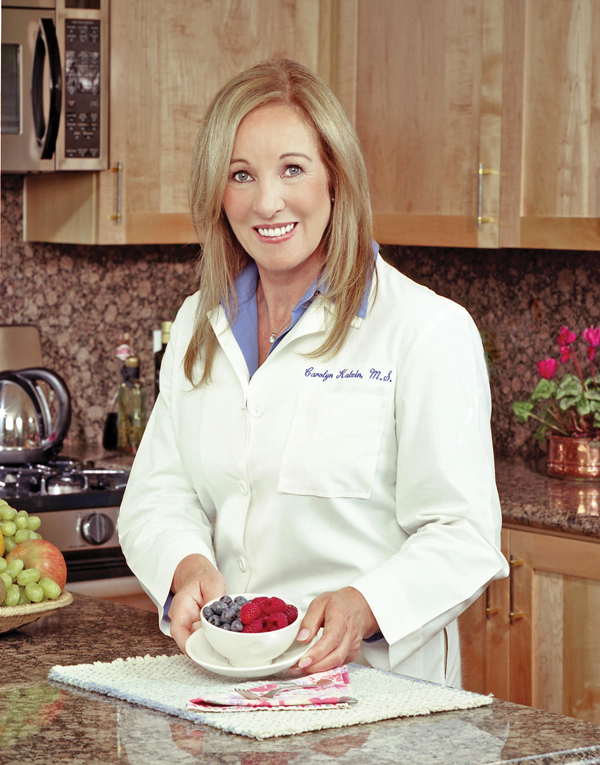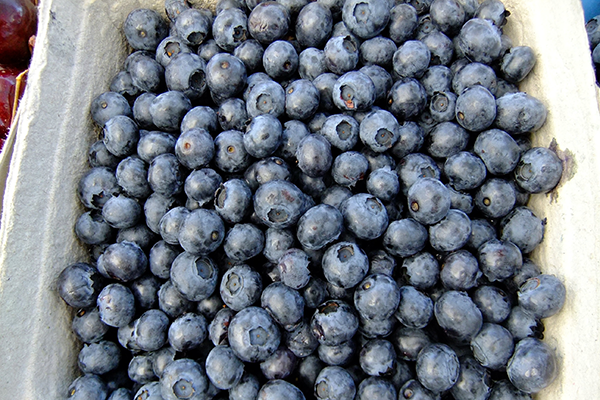Eating Well during Cancer Treatment
by Carolyn Katzin, MS, CNS
“What should I eat now?” After a cancer diagnosis, most people want to know what changes they should make in their diet. After all, eating is one of the few areas that cancer survivors can exercise control over once a diagnosis has been made and treatment begins.
The 80/20 Rule
When it comes to eating well during cancer treatment, a simple rule of thumb to remember is the 80/20 rule. Eat food that is nutrient rich (contains protein, vitamins, minerals, and other useful components for building new cells) 80 percent of the time, and eat purely for pleasure 20 percent of the time.
It’s easy to be confused about the difference between eating for cancer prevention and eating during cancer treatment. Let’s clarify. Foods that may be associated with an increased incidence of certain types of cancer are generally best restricted. These include meats cooked at high temperatures and processed meats (those containing nitrites and other heterocyclic amines). During treatment, however, eating a small quantity of processed meats may help stimulate appetite, as they tend to be more flavorful. Thus, these might fall into the 20 percent category and be enjoyed occasionally. Marinades can help reduce the formation of potential carcinogens during cooking, as well as enhance flavor.
Remember the 80/20 Rule: Eat food that is nutrient rich 80% of the time, and eat purely for pleasure 20% of the time.
Most people recognize that foods high in added sugars should be restricted in a healthful, wellness-promoting diet. However, this doesn’t mean that you should eliminate all sugar (and hence much of the pleasure for many people) out of your diet. It simply means that these foods should also fall into the 20 percent category – eat or drink them for pleasure, in small quantities.
It is especially important to limit foods high in added sugars during chemotherapy, as most infusion cocktails include steroids that affect glucose and insulin dynamics. A low glycemic load diet is recommended during chemotherapy to help regulate blood sugar levels.
Nutrition and Treatment Side Effects
Treatment for cancer may include all or some of these protocols: surgery, chemotherapy, immunotherapy, and radiation. Each of these can affect appetite, digestion, and bowel functions. Let’s look at some of the common side effects of treatments and how modifying your diet may be helpful.
Fatigue is a common side effect of all cancer treatments. Dehydration can worsen fatigue, and may even be a primary cause, so it’s important to make sure you drink sufficient fluids each day. Soups and broths are valuable ways to provide electrolyte-rich and tasty fluids. You may also want to switch to decaffeinated tea or coffee.
An herbal alternative would be Rooibos, a popular South African tea that is low in tannins and caffeine. Ashwagandha is another plant that is recommended to help fight fatigue; the root can be made into a tea. As with many herbal products, however, these may interact with some medications, as they can affect liver enzyme activity. Tell your doctor about any herbal products you consume, either as teas or as supplements, so they can alert you to any unwanted side effects.
Appetite and taste changes, as well as feelings of early satiety or fullness, may arise during chemotherapy treatment. Eating small, frequent snacks may help you maintain a sufficient protein intake, which is important for maintaining muscle mass. Taste changes are usually temporary and may be minimized by trying some masking flavors such as cherry, strawberry, and banana. Umami is a taste that is often not as readily affected as sweet, bitter, or salty. Many Asian dishes are rich in umami (it is a glutamate-like flavor similar to MSG). You may also want to experiment with different textures and aromas, as they are just as important as taste in stimulating appetite and are sometimes easier to modify. Ginger is a safe and effective way to minimize nausea; try ginger ale, tea, hard candies, or ginger-flavored
cookies, for example.
Understanding Glycemic Index and Glycemic Load
Some foods provide very rapid energy to the body and brain. If these foods contain few nutrients, then you may soon find yourself “running on empty,” or you may simply be overfed and undernourished. A healthy and balanced diet contains a mixture of high glycemic index and low glycemic index foods, with an emphasis on beans, whole grains, vegetables, and fruit – in other words, plant-based foods.
What is glycemic index?
It is a measure of how fast the carbohydrate of a particular food is converted to glucose and enters the blood. The numbers are percentages with respect to a reference food.
How is glycemic index determined?
A reference food (white bread in our list) is given a rating of 100, and all other foods are tested as to how they affect a person’s blood sugar, insulin, and lipid levels compared to the reference food. For example, with white bread as a reference food, beans would have a glycemic index of about 60.
What does it all mean?
Put simply, the more glucose that reaches the blood in the first three hours after consuming a food, the higher its glycemic index.
What is glycemic load?
Glycemic load is a more relevant concept, as it is an indicator of how much a certain food will raise a person’s blood glucose level after eating it. Glycemic load accounts for how much carbohydrate is in the food, in addition to how much each gram of carbohydrate in the food raises blood glucose levels. Thus, some foods may have a high glycemic index but a low glycemic load. Foods with more dietary fiber tend to have a lower glycemic load then foods with less dietary fiber.
It’s important to keep in mind that glycemic index and glycemic load can be valuable in modifying your diet, but only when seen in the context of your whole day’s intake of food – not just one food item or one meal. Remember, a healthy and balanced diet contains a mixture of both high glycemic index and low glycemic index foods.
Changes in bowel habits are very common and arise as a side effect of chemotherapy, as well as anti-nausea and pain medications. Gentle natural laxatives include pitted fruits like plums, apricots, and cherries, as well as their dried versions, such as prunes, for example. To manage diarrhea, try eating bland foods (such as bananas, rice, applesauce, white toast, and rice or oat breakfast cereals) that help bind fluids in the bowel. Many people find avoiding milk is helpful during treatment, as the lactose (milk sugar) may be poorly absorbed and cause abdominal gas or diarrhea. Adding the enzyme lactase may help with the gastrointestinal distress, as may simply switching to almond milk or rice milk.
High Glycemic Index Foods
(not good)
- Ice cream
- Pretzels, chips
- White bread
- Plain bagels
- Cornflakes
- Mashed potatoes
Low Glycemic Index Foods
(good)
- Whole grains
- Oatmeal
- Brown rice
- Whole grain pasta
- Fruit (berries especially)
- Beans, seeds, nuts
A healthy and balanced diet contains a mixture of high glycemic index and low glycemic index foods, with an emphasis on beans, whole grains, vegetables, and fruit.
Two Key Points to Remember If you don’t take anything else away, I want you to remember these two things:
- Get sufficient protein. For most people, this is equivalent to about eight ounces of fish, lean meat, or a vegetarian alternative each day. If you lack appetite, then a protein smoothie made from whey or rice and pea protein powder mixed with almond milk or rice milk is a good alternative.
- Stay well hydrated by having water, soups, broths, and vegetable juices throughout the day – about eight to ten
glasses a day total.
Many people find the topic of nutrition support and supplement information difficult to navigate during cancer treatment. It is good to have someone who can guide you and your loved ones during this time to help you sort out the hype and misinformation that is, unfortunately, rampant on the Internet. I suggest seeking out a trained nutrition
professional who specializes in oncology.
Eat well and stay well!

Carolyn Katzin is an Integrative Oncology Specialist at the Simms/Mann – UCLA Center for Integrative Oncology in Los Angeles, CA.
This article was published in Coping® with Cancer magazine, January/February 2016.


